Next time you want a lamb roast, why not try this slow-roasted lamb shoulder? It delivers the most succulent and tender meat but at a fraction of the price you'd pay for lamb leg!
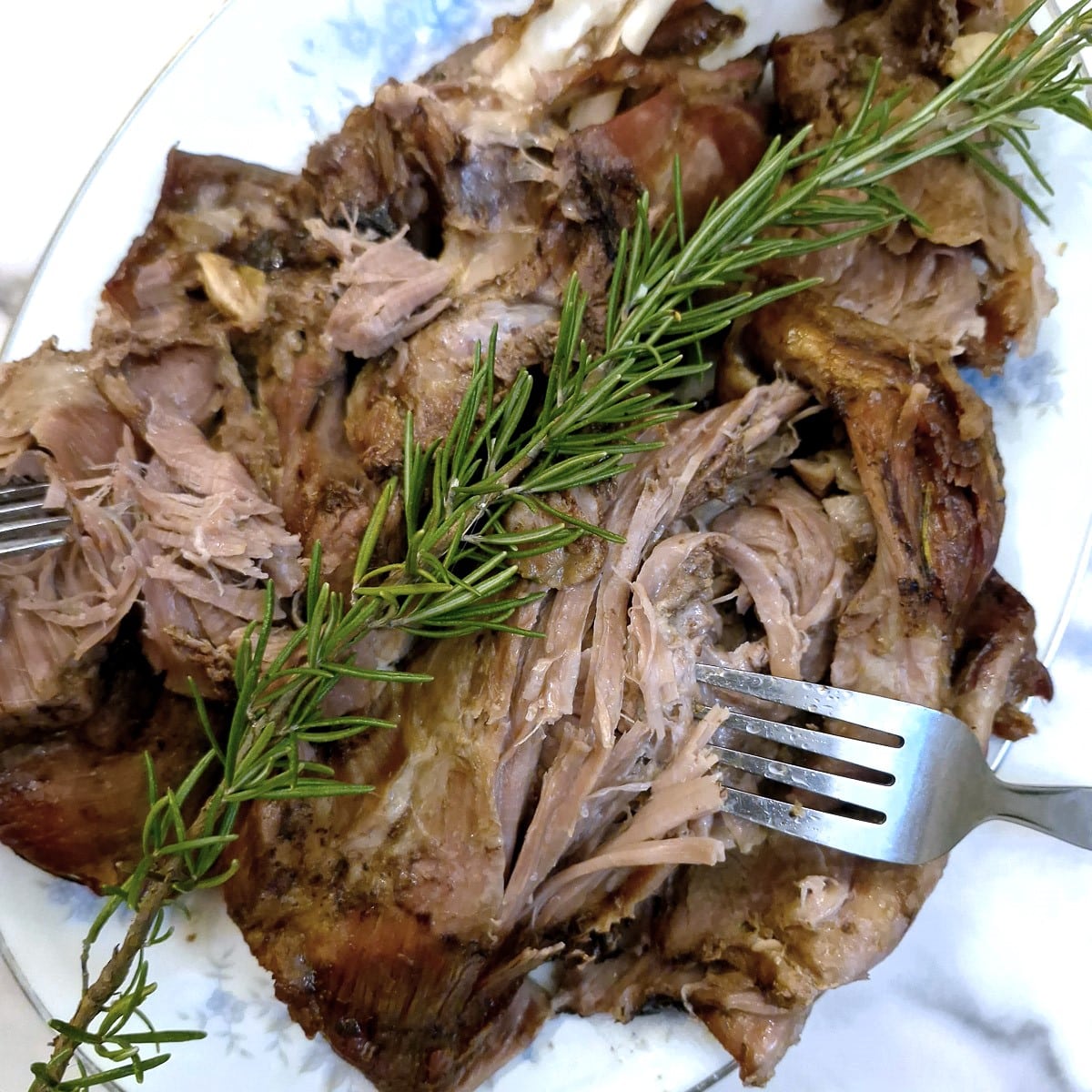
A slow-roasted lamb shoulder delivers the most succulent meat which is so tender you don't even need to carve it; it just falls apart at the pull of a fork!
For some reason, people tend to prefer lamb leg which is a shame, because lamb shoulder has a richer, more intense flavour than the leg, due to the high fat content in the shoulder.
I also think lamb shoulder is easier to cook than lamb leg as the texture and flavour improve with a long slow cooking period and a few extra minutes in the oven won't hurt. Lamb leg on the other hand can go from perfectly cooked to overdone in a matter of minutes.
If you would prefer a recipe for roasted lamb leg you might like to try this recipe for minted roast leg of lamb. If you prefer cooking your lamb shoulder in the slow cooker rather than in the oven you might like to try this slow cooker lamb shoulder recipe instead.
This slow-roasted lamb shoulder recipe that I'm sharing today is studded with garlic and rosemary before being placed into the oven. The long slow cooking process allows plenty of time for the flavours to infuse throughout the meat.
It's roasted on a bed of onions, garlic and carrots, and once cooked, the vegetables are blended with the cooking juices to form the most delicious gravy.
The beauty of this roast lamb shoulder is that it only takes 5 minutes to prep, then it's into a moderate oven for a few hours until it's done!
So without further ado, let me show you how to cook a delicious slow-roasted shoulder of lamb in the oven.
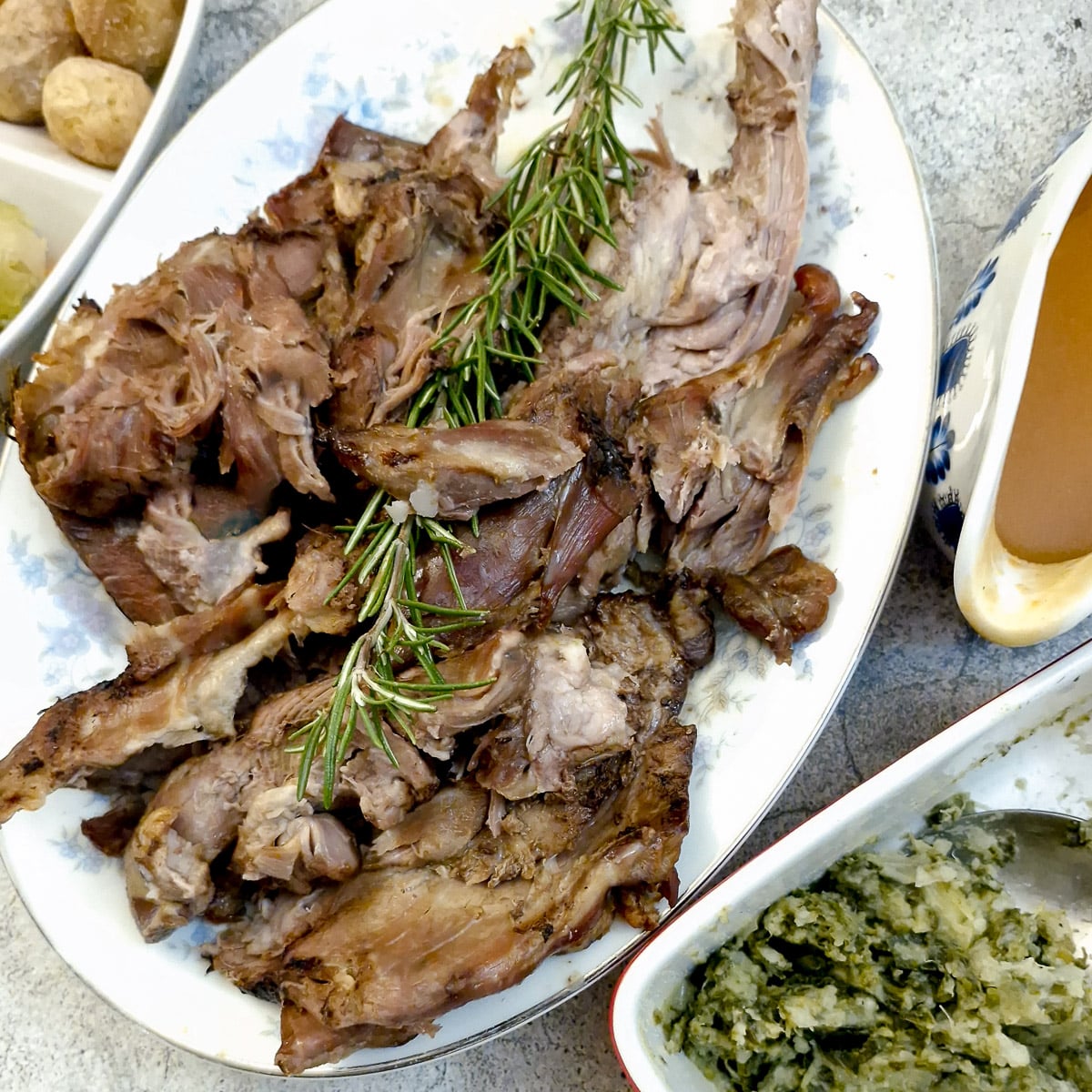
Jump to:
Ingredients
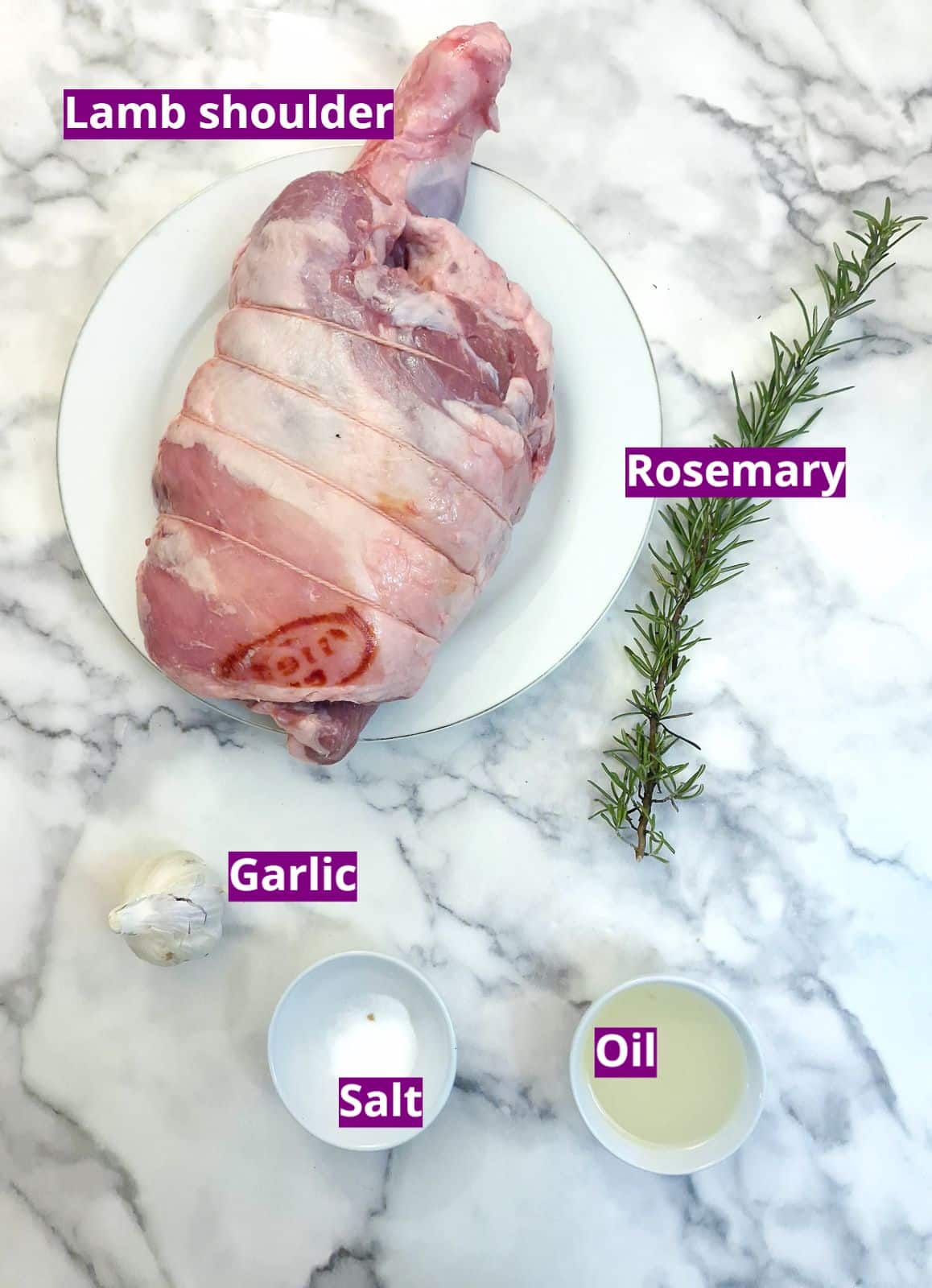
- Lamb shoulder joint - mine weighed 2.2 kg or just under 5 pounds. This will easily feed 6 to 8 people. You don't have to be too precise with the weight - a little under or over won't make any difference to the cooking time.
- Rosemary - sprigs of rosemary will be studded into the lamb along with slivers of garlic for flavouring.
- Garlic - the garlic cloves should be cut into thin slivers so you can stud them into the lamb. Depending on how much garlic you like you can stud as many slivers into the roast as you prefer.
- Salt and oil - these are rubbed over the lamb before it goes into the oven. I used sunflower oil but you could use any neutral-flavoured cooking oil for this.
Optional ingredients (for the gravy):
In addition to the above ingredients, you may like to add a quartered onion and some chunky carrots to the roasting pan along with a few extra cloves of garlic to make the gravy.
You will also need chicken or lamb stock. You can make it with a stock cube. The actual amount will depend on the amount of gravy you and making, and also on how much cooking liquid is left in the pan.
To thicken the gravy you will need some cornflour or cornstarch.
**You can find the exact ingredient measurements to make this slow-roasted lamb shoulder on the printable recipe card at the end of this post**
Instructions
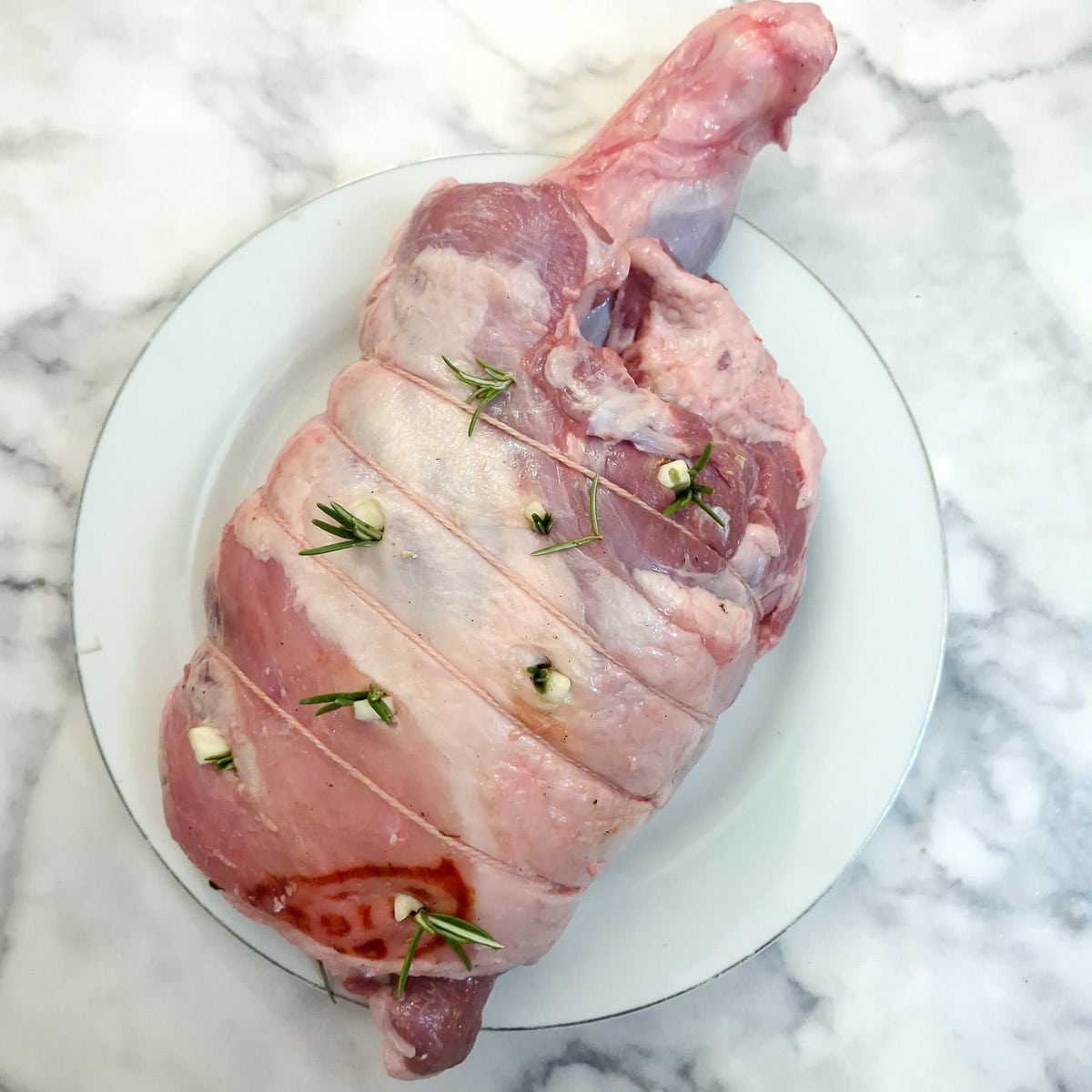
Step 1: Use a sharp knife to make slits in the lamb and insert a sliver of garlic and a sprig of rosemary into each slit. Rub the lamb all over with salt and oil.
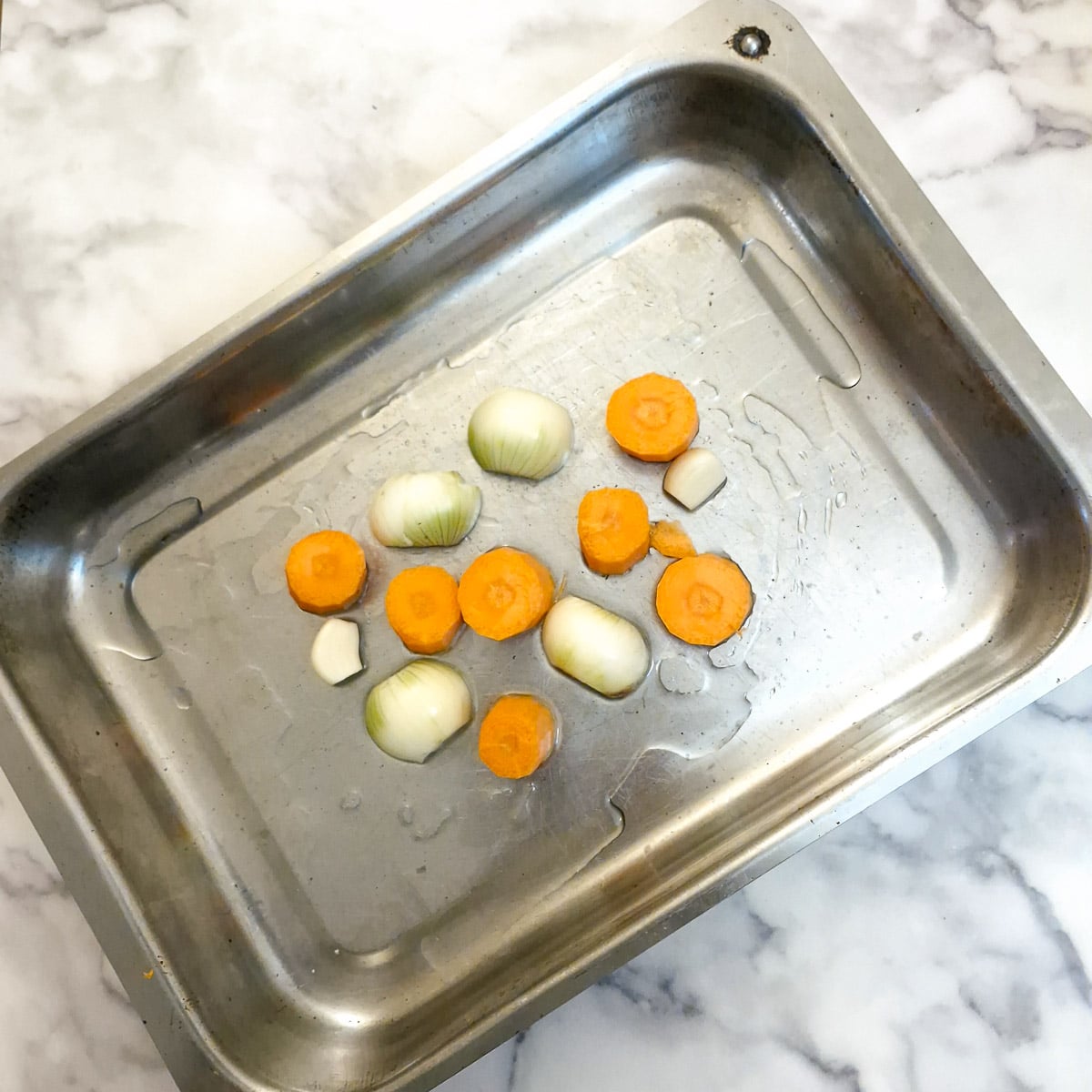
Step 2: If you intend to make gravy place a quartered onion, a few large chunks of carrots and one or two peeled garlic cloves into a roasting pan. Add a tablespoon of oil so they don't burn before the lamb has released its fat.
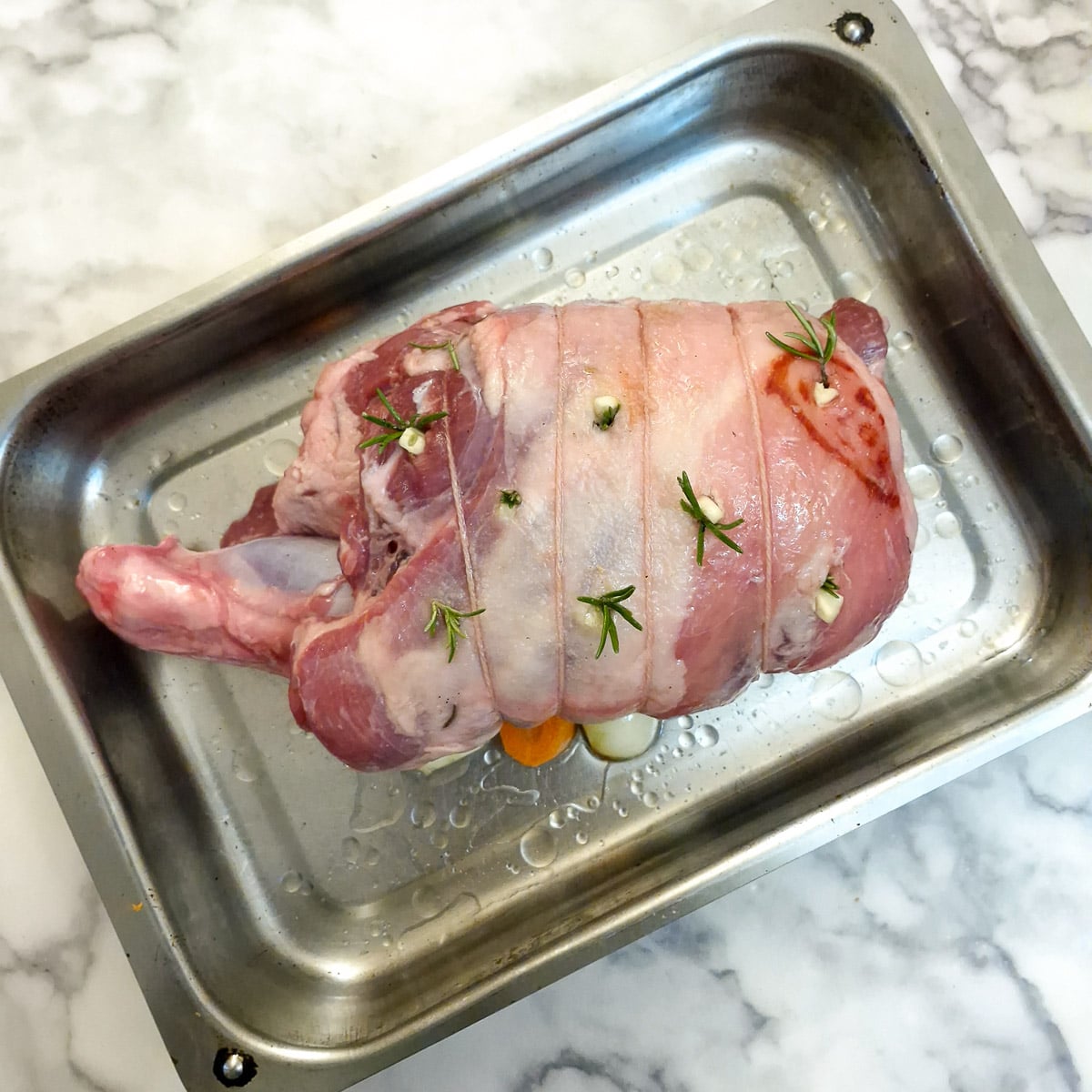
Step 3: Place the lamb shoulder into the roasting pan on top of the vegetables and pour one-quarter of a cup of water around the edges. Cover the pan tightly with a layer of tin foil.
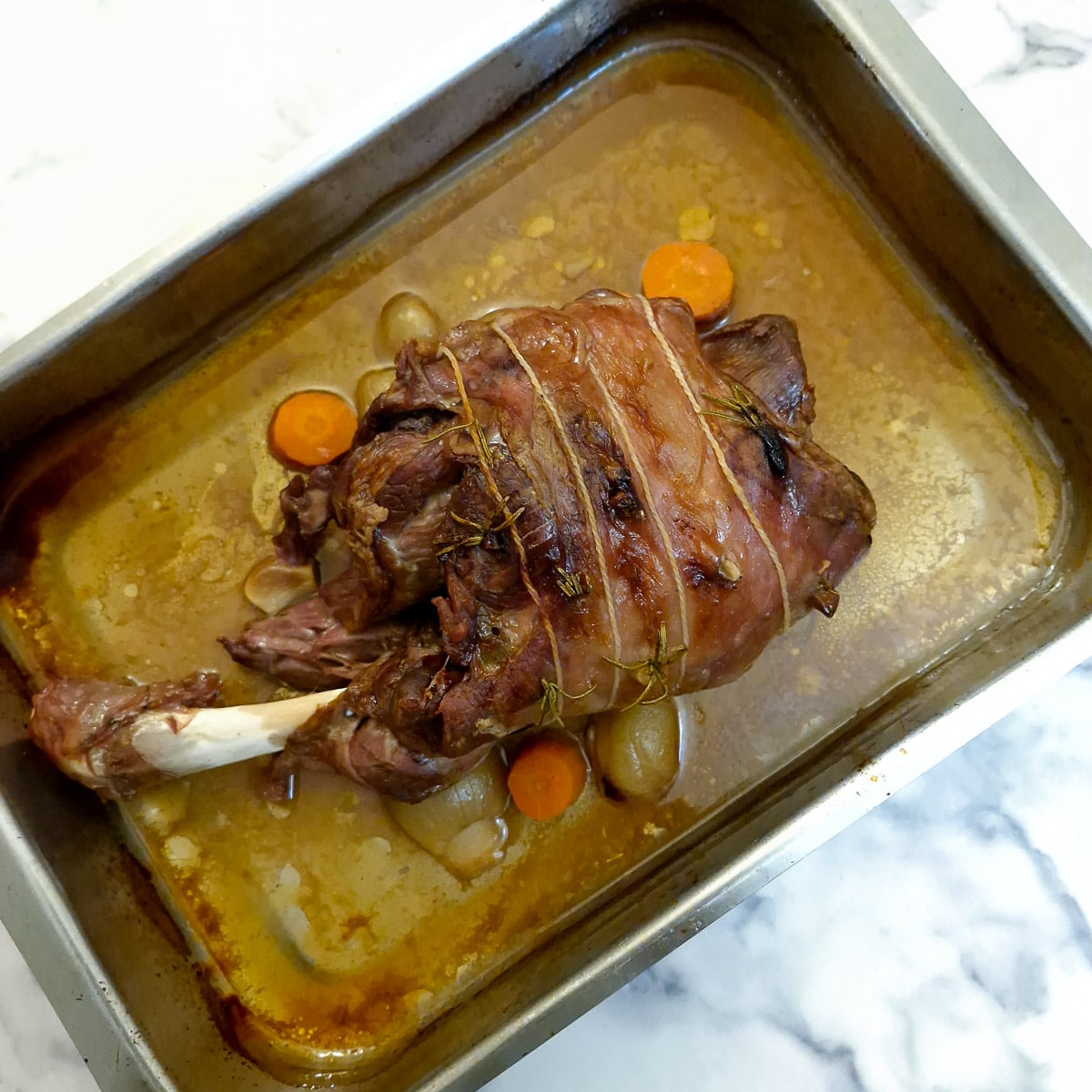
Step 4: Place the lamb in the oven and cook for 3.5 to 4 hours at 160C / 320F. Remove the pan and remove the tin foil. Baste the lamb with the cooking juices and replace in the oven for 10 to 15 minutes to brown the skin. Transfer the lamb to a serving dish, cover lightly with tin foil and allow it to rest for at least 20 minutes before serving.
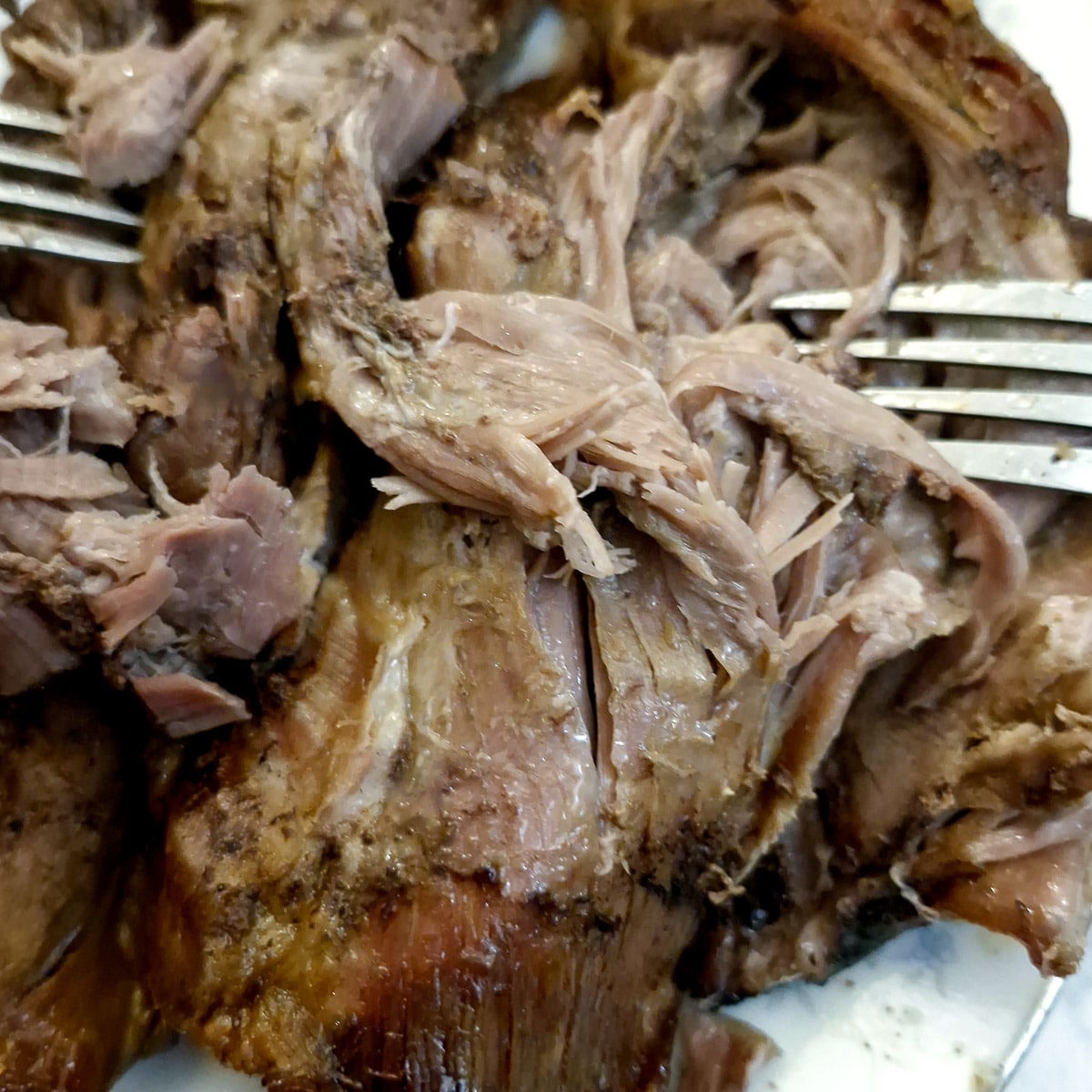
Step 5: The cooked lamb should be soft enough to fall off the bone and should shred easily with a fork.
Make the gravy
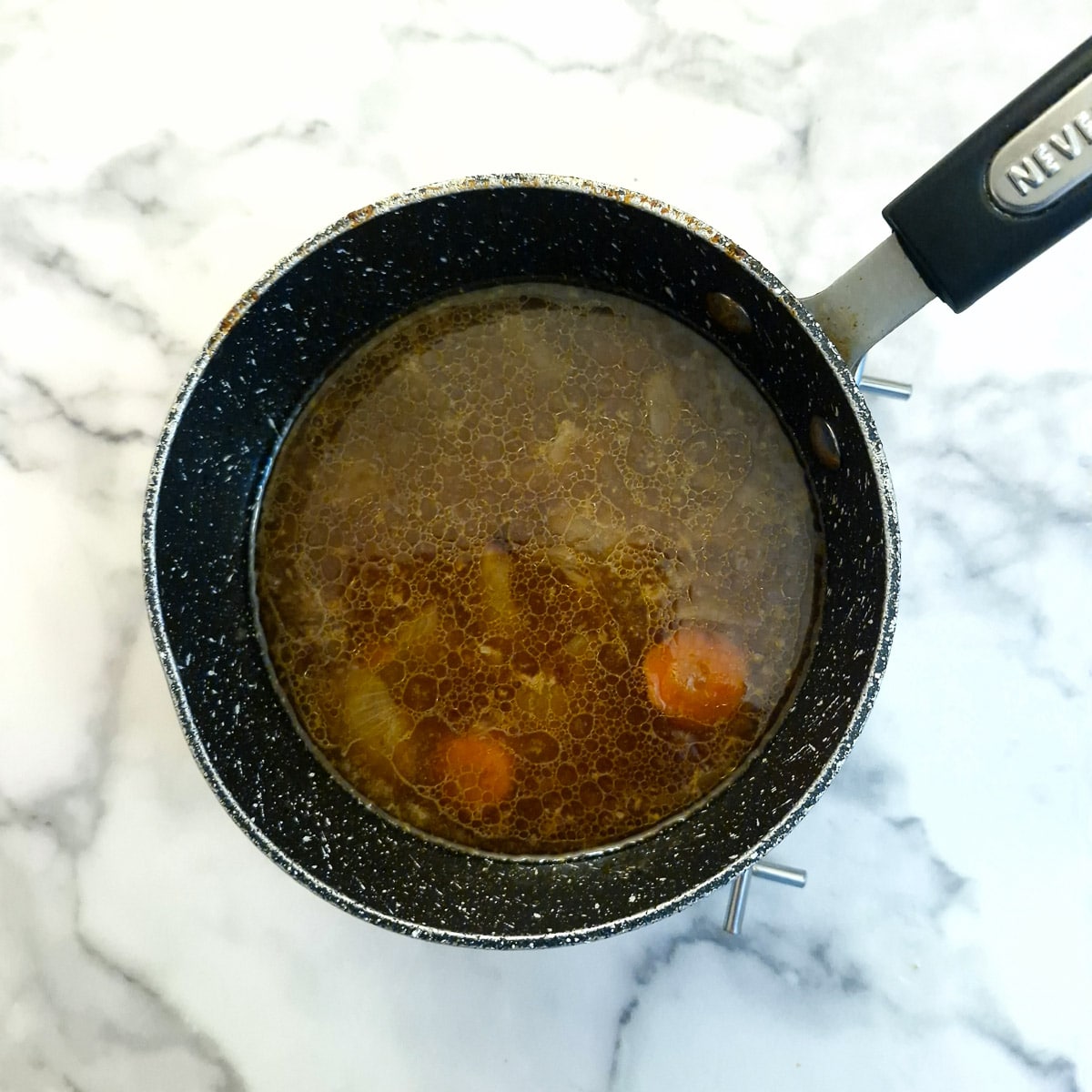
Step 6: Pour the fat out of the roasting pan and discard it. Tip the vegetables with the cooking juices and any residue into a saucepan and add one cup of chicken or lamb stock.
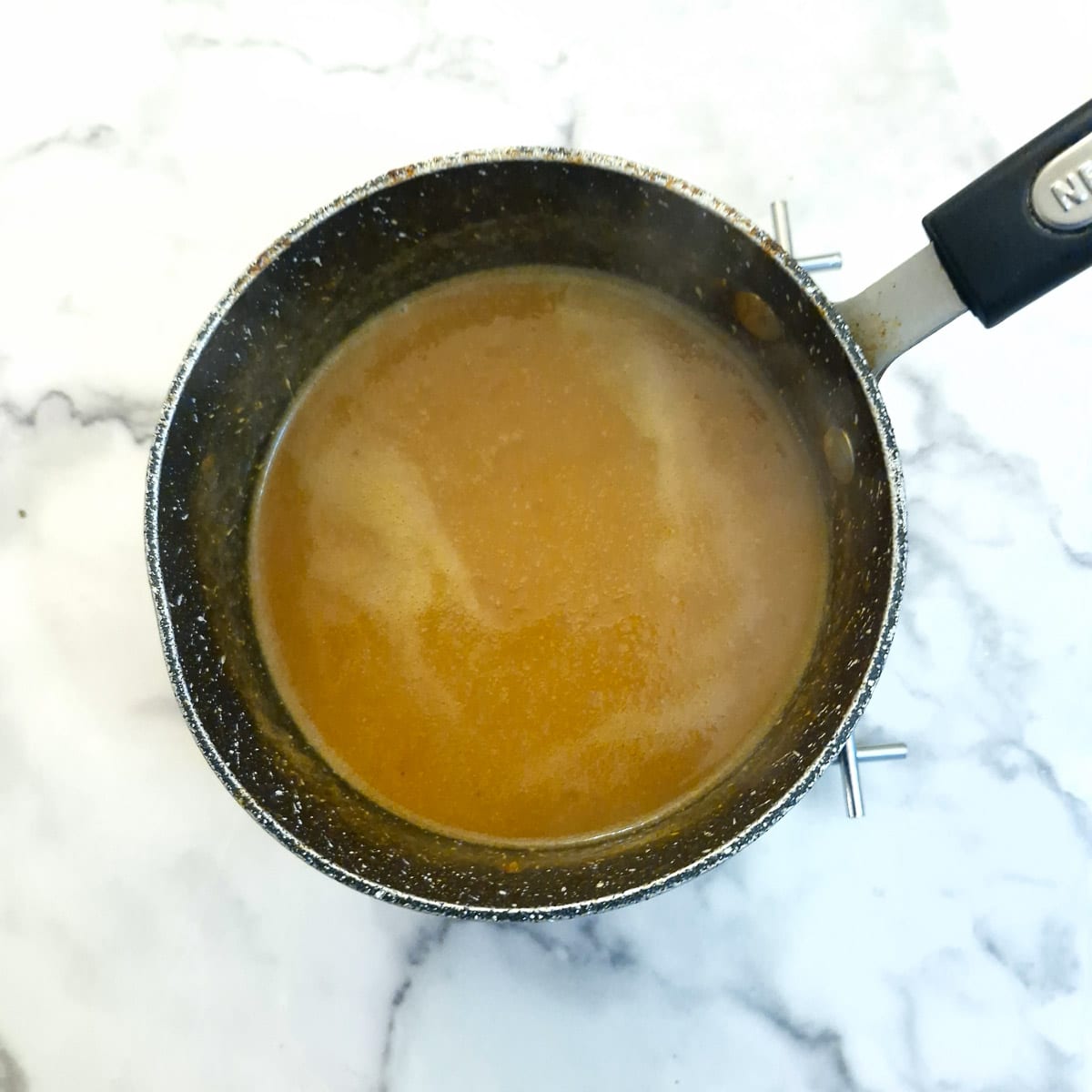
Step 7: Blend the mixture with a hand blender or stick blender until the vegetables are smooth. Bring the gravy to a boil and stir in a mixture of cornflour and water. Stir over medium heat until the gravy has thickened.
Tips for a successful outcome
Here are my top tips to ensure your slow-roasted lamb shoulder turns out perfectly:
- When inserting the garlic and rosemary into the lamb, make deep slits with a sharp knife so the garlic fits all the way into the meat.
- Use your own taste to determine how many studs to make. The flavour of the garlic intensifies as it cooks. I found 8 studs were sufficient for my taste - if you want a stronger garlic taste, make more.
- Don't forget to add a quarter cup of water to the roasting pan before placing it in the oven. The water creates steam inside the tin foil lid, helping ensure the meat remains juicy.
- Take care when removing the foil lid from the roasting pan. There will be a lot of hot steam in the dish.
- If you think the lamb isn't soft enough you can replace the tin foil and leave the lamb in the oven for another 30 minutes.
- Once the lamb has been basted, don't leave it uncovered in the oven for longer than 15 minutes or you run the risk of the lamb developing a hard outer crust.
- Do allow the lamb to rest before pulling it apart. Resting the lamb allows the juices to settle back into the meat fibres.
- There will be a lot of fat in the roasting pan. Do remember to pour most of it away before making the gravy. One or two tablespoons of fat in the gravy will be fine - any more than that and the gravy will be greasy and unappealing.
What to serve the slow-roasted lamb shoulder
My favourite way of serving this slow-roasted lamb shoulder is with roast potatoes and freshly steamed vegetables, smothered in the tasty gravy!
If you want to put a bit more effort into preparing your vegetables (other than just steaming them) here are some of my favourite sides to serve with lamb:
- spring green potato mash
- rumbledethumps
- minted smashed peas
- green bean casserole
- easy crispy baby roast potatoes
- creamed cabbage
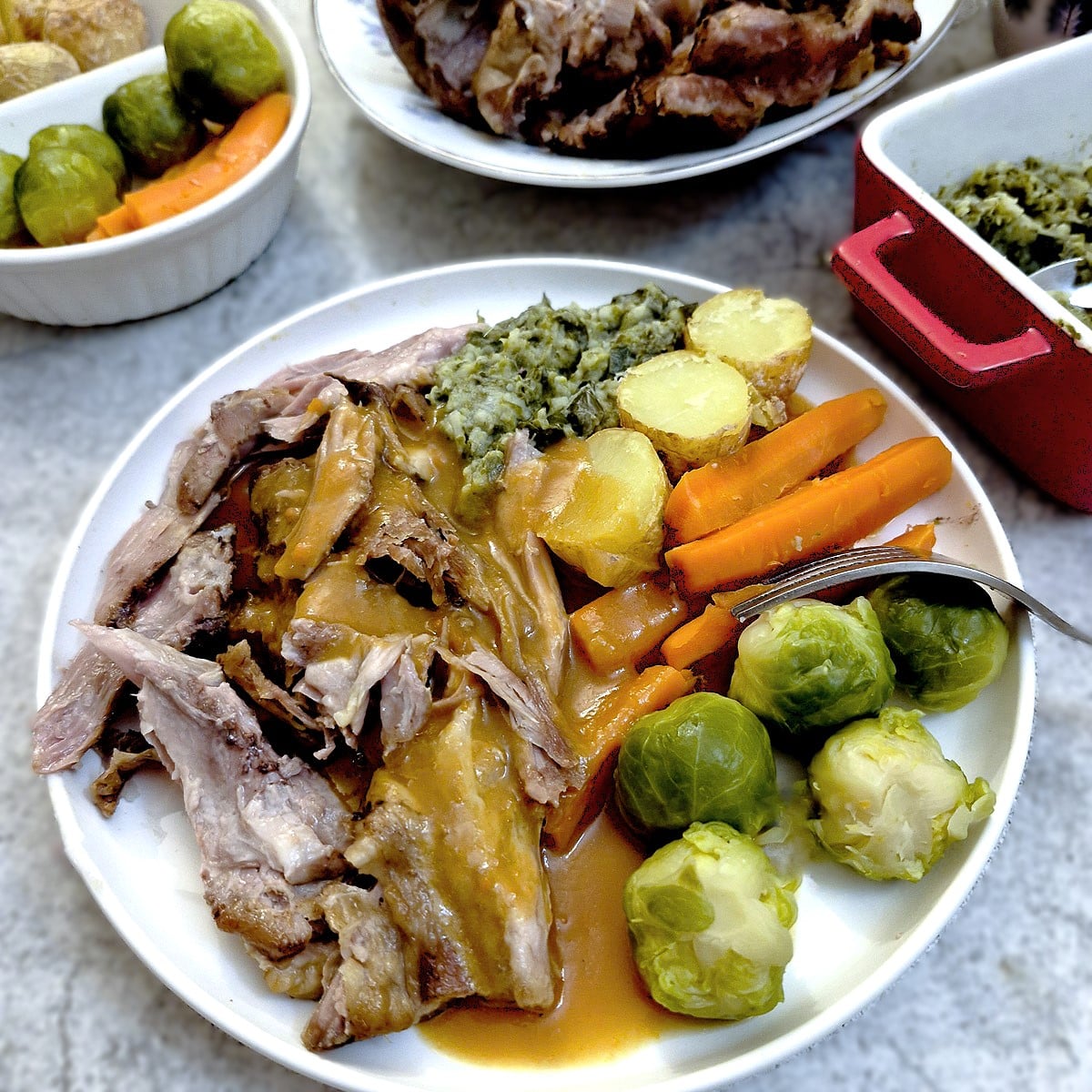
Variations
Instead of flavouring the lamb with rosemary and garlic, let the flavour of the lamb shine and simply rub it with salt and oil.
Alternatively, here are a few other suggestions:
- Mint - lamb and mint is a classic flavour! Rub the lamb with powdered mint rub or 2 to 3 tablespoons of mint sauce.
- Herbs - for a herby flavour, rub a mixture of oregano and thyme or your preferred dried herb combination onto the meat before placing it in the oven.
- Honey mustard - for a sweet, tangy flavour, drizzle over a mixture of honey and Dijon mustard.
- Citrus - for a fresh citrus flavour, rub the lamb with one or 2 teaspoons of orange or lemon zest and add orange or lemon juice to the roasting pan instead of water.
- Oriental - for an eastern flavour, rub the lamb with Thai green curry paste before roasting.
- Hot and spicy - season the lamb with jerk spice mix.
- Curry - coat the lamb with your favourite curry powder blend.
Equipment
As far as equipment goes, you will need a roasting pan large enough to hold the lamb shoulder. If your roasting pan has a lid, that will be perfect; if it doesn't have a lid, cover the pan tightly with tin foil before placing it in the oven.
You will also need a sharp pointed knife for making slits in the meat to insert the garlic and rosemary.
If you intend to make gravy you will need a small saucepan.
Storage
Leftover lamb shoulder can be kept in a covered container in the refrigerator for 3 to 4 days. It makes great sandwiches, or if you've got enough leftover vegetables you can simply reheat it in the microwave for a few minutes for another meal.
My top tip for reheating in the microwave would be to arrange the lamb on a plate and cover it with another plate turned upside down before reheating. Reheat at full power for one-minute intervals until the lamb is piping hot.
I often cut any leftover lamb into cubes, freeze it in a ziploc bag and use it to make leftover lamb pies or lamb curry. Leftover lamb can be frozen for up to 3 months and defrosted in the refrigerator.
FAQ
There are many reasons:
- lamb shoulder contains more bone and connective tissue than lamb leg, so there is less usable meat per pound.
- shoulder takes longer to cook than leg making it less appealing to consumers.
- lamb shoulder is normally sold in smaller portions than an entire lamb leg, so for presentation purposes, people tend to purchase lamb legs.
- lamb shoulder is perceived to be more of a rustic cut of meat, more suited for making soups and stews than roasting.
The large flat bone in a lamb's shoulder is called the scapula or shoulder blade.
The main reason why a lamb's shoulder is tougher than a leg is because the shoulder gets more exercise as it has to support activities such as walking and grazing. Consequently, it contains more connective tissue which makes the meat tougher. Slow roasting the shoulder breaks down the connective tissue, resulting in ultra tender meat.
You can take approximately half an hour off the cooking time for each pound in weight (500 grams).
1 to 1.5 kg or 2.5 to 3 pounds - roast for 2.5 to 3 hours
1.5 to 2 kg or 3 to 4.5 pounds - roast for 3 to 3.5 hours
2 to 3 kg or 4.5 to 6 pounds - roast for 3.5 to 4 hours
Don't worry too much about being precise. In all cases a few extra minutes won't hurt!
This is not strictly necessary, but I like to add a small amount of water to the roasting tin to create a steamy environment which helps the lamb remain moist and juicy.
Save for later
If you would like to make this slow-roasted shoulder of lamb, why not save the recipe to one of your Pinterest boards so you can find it easily? Just click on the image below.
Alternatively, you can save the recipe by clicking on the floating heart icon on the right-hand side of the screen.
Related recipes
Visit my lamb recipes page for other delicious recipes using lamb. Here are a few you might enjoy:
📋The recipe
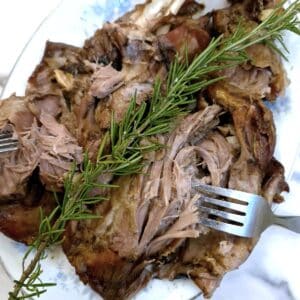
Slow-roasted lamb shoulder
(Click the stars to rate this recipe)
Equipment
- Large roasting pan with lid (or use tin foil to cover)
- Sharp Knife
- Saucepan optional (for making gravy)
Ingredients
- 4.5 pounds / 2kg lamb shoulder joint
- 1 small sprig rosemary
- 3 - 4 cloves garlic cut into slivers
- 1 teaspoon salt or to taste
- 1 tablespoon sunflower oil to rub on the lamb
- ¼ cup / 60 ml cold water
Gravy
- 1 medium onion quartered
- 1 large carrot peeled and cut into chunks
- 2 - 4 cloves garlic
- 1 - 2 tablespoon cornflour or cornstarch
- 2 - 4 tablespoons cold water
- 1 tablespoon sunflower oil to put in the roasting tray
- 1 to 2 cups / 240 to 480 ml chicken or lamb stock depending on how much gravy you want to make.
Instructions
- Use a sharp knife to make slits in the lamb and insert a sliver of garlic and a sprig of rosemary into each slit. Rub the lamb all over with salt and oil.4.5 pounds / 2kg lamb shoulder joint, 1 small sprig rosemary, 3 - 4 cloves garlic, 1 teaspoon salt, 1 tablespoon sunflower oil
- If you intend to make gravy place a quartered onion, a few large chunks of carrots and two or three peeled garlic cloves into a roasting pan. Add a tablespoon of oil so they don't burn before the lamb has released its fat. Skip this step if you are not making gravy.1 medium onion, 1 large carrot, 2 - 4 cloves garlic, 1 tablespoon sunflower oil
- Place the lamb shoulder into the roasting pan on top of the vegetables (or directly onto the base of the roasting pan) and pour one-quarter of a cup of water around the edges. Cover the pan tightly with a layer of tin foil.¼ cup / 60 ml cold water
- Place the lamb in the oven and cook for 3.5 to 4 hours at 160C / 320F.
- Remove the pan and remove the tin foil. Baste the lamb with the cooking juices and replace in the oven for 10 to 15 minutes to brown the skin.
- Transfer the lamb to a serving dish, cover lightly with tin foil and allow it to rest for at least 20 minutes before serving.
Gravy
- Pour the fat out of the roasting pan and discard it. Tip the vegetables with the cooking juices and any residue into a saucepan and add one or two cups of chicken or lamb stock.1 to 2 cups / 240 to 480 ml chicken or lamb stock
- Blend the mixture with a hand blender or stick blender until the vegetables are smooth. Bring the gravy to a boil and stir in a mixture of cornflour and water. Stir over medium heat until the gravy has thickened.1 - 2 tablespoon cornflour or cornstarch, 2 - 4 tablespoons cold water
Notes
- When inserting the garlic and rosemary into the lamb, make deep slits with a sharp knife so the garlic fits all the way into the meat.
- Use your own taste to determine how many studs to make. The flavour of the garlic intensifies as it cooks. I found 8 studs were sufficient for my taste - if you want a stronger garlic taste, make more.
- Don't forget to add a quarter cup of water to the roasting pan before placing it in the oven. The water creates steam inside the tin foil lid, helping ensure the meat remains juicy.
- Take care when removing the foil lid from the roasting pan. There will be a lot of hot steam in the dish.
- If you think the lamb isn't soft enough you can replace the tin foil and leave the lamb in the oven for another 30 minutes.
- Once the lamb has been basted, don't leave it uncovered in the oven for longer than 15 minutes or you run the risk of the lamb developing a hard outer crust.
- Do allow the lamb to rest before pulling it apart. Resting the lamb allows the juices to settle back into the meat fibres.
- There will be a lot of fat in the roasting pan. Do remember to pour most of it away before making the gravy. One or two tablespoons of fat in the gravy will be fine - any more than that and the gravy will be greasy and unappealing.
Nutrition
I am not a nutritionist. The nutrition information has been calculated using an on-line calculator, and is intended for information and guidance purposes only. If the nutrition information is important to you, you should consider calculating it yourself, using your preferred tool.
If you made this recipe and enjoyed it, I'd love it if you could give me a star rating in the comments below. And if you'd like to get in touch, you can email me at [email protected]. I'd love to hear from you. And don't forget to subscribe to my mailing list so you can grab yourself a copy of my FREE COOKBOOK!
If you'd like to continue browsing, just click on this link to all my recipes.


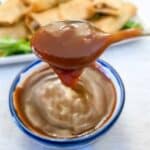
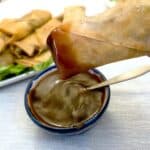
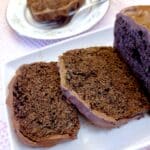
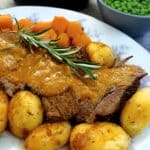
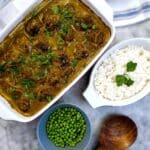
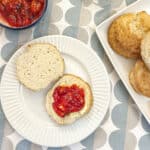

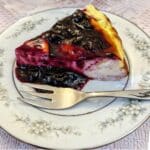
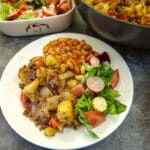


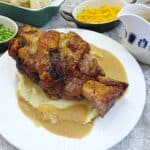
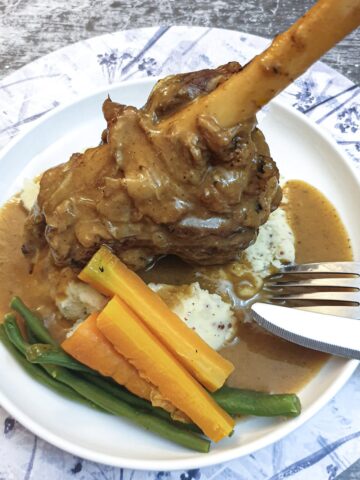
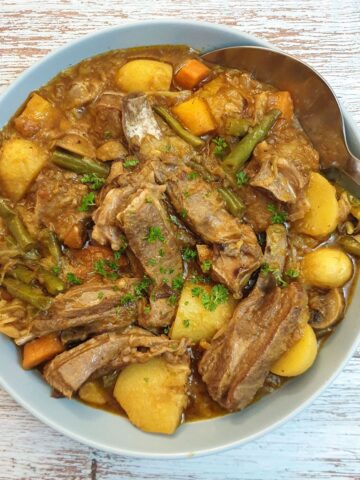
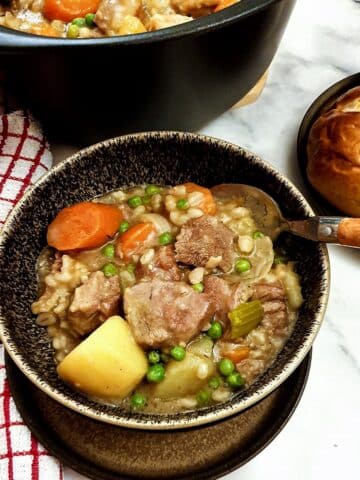

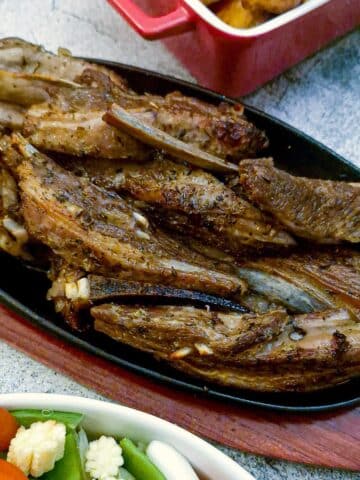
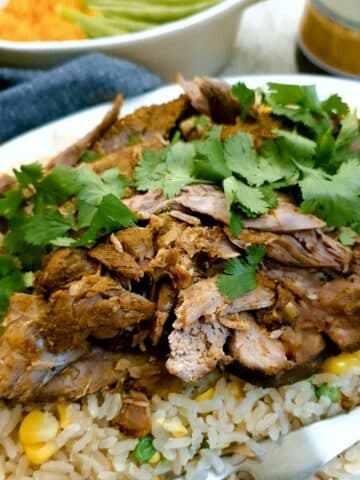
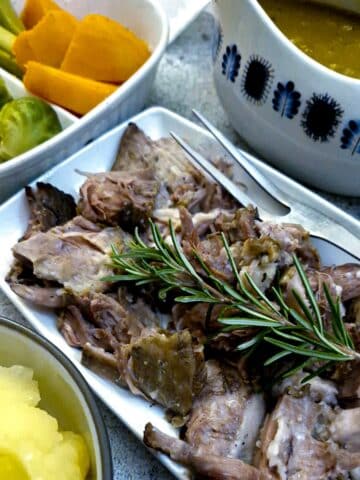
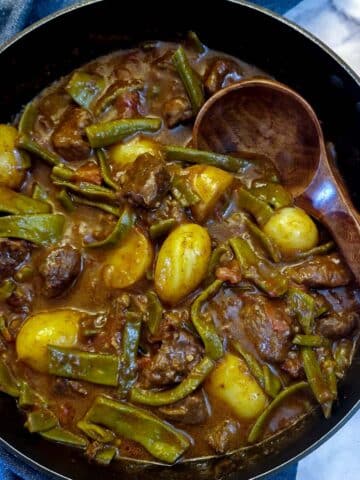
Did you make this recipe? Let me know!